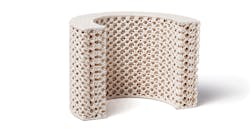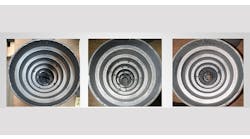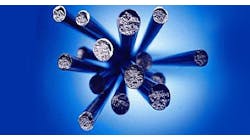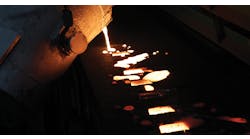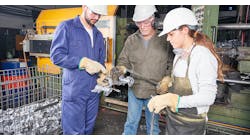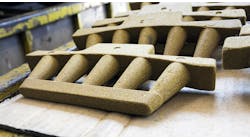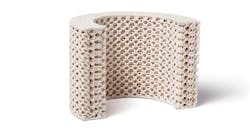Latest from Ask the Expert
When you consider adopting a new binder system, a few questions must be considered. First, and foremost, what is your implementation plan? No supplier will understand your foundry’s process as well as you. Even so, they should have technical expertise, especially surrounding their own binder offerings. Ideally, your supplier should be assisting in any new binder implementation. Otherwise, it’s like handing an airplane pilot helicopter keys and saying, “You’re smart, you’ll probably figure it out.” Sure, he might figure it out, but what are the potential consequences in the more likely example that he will not? Technical expertise is your insurance against the undetermined consequences, as well as the reason that the chance you take will work out for the best. It’s both smart and ethical.
Technical expertise coupled with any new binder system makes good business sense. In addition, however, you should consider “cost-in-use.” This vital purchasing parameter oftentimes is overshadowed by short-term gains. Binder cost-in-use can be defined as your “realistic” expected costs over an extended period of time.
Consider this example: An individual evaluates the advantages of two used cars available for purchase. One car costs $10,000, and comes with no warranty and no maintenance history. The other car costs $20,000 and comes with a five-year warranty and excellent maintenance history. In this scenario, only the second option can realistically deliver any expected long-term value (i.e., five years) for the cost. The same applies to binder systems. Yet, this must coincide with servicing (e.g. technical services.) A cost-in-use report is essentially worthless if the supplier cannot reasonably ensure your success. Otherwise, you’re simply receiving a “perfect-world scenario” estimate, which doesn’t exist … especially in foundries.
As to whether or not you should upgrade your cold box (CB) system, have you ever stepped back from your casting operation and asked, “Am I running the best cold box technology for my casting process and business plan?” Whether you desire an improved system, or a progressive approach to new work you’ve obtained, it pays to ask the right questions and get clear answers.
Because your CB system is only one part of the casting process, this is a question you should raise during strategic planning, or at least once per year. In regard to cold box systems, the issue is not only about making cores. Rather, it is about driving the economics of your business while making sure you build a sustainable operating platform. All things considered, sustainability matters — for environmental considerations as well as business-planning objectives. These factors are not mutually exclusive.
If you are using older resin and catalyst technology there is significant room for improvement. Don’t worry; this doesn’t necessitate buying a new core machine. Higher productivity can be achieved with higher-performance binders, a faster catalyst and enhanced tooling design. In fact, simulation services have made tooling design a science.
Perhaps, also, you’re running too many coremaking processes and need to consolidate into one, or have old tooling that needs to be optimized. Design services (i.e., simulation software) can help in this regard, too.
In addition to the financial effect of your implemented CB system you should consider trending environmental issues. Are you operating a sustainable platform that complies with local/regional regulations? Substantial reductions in VOCs and HAPs, linked to plant emission levels, can be achieved with newer, eco-driven CB binders, with coinciding performance improvements.
There are inorganic options that take a giant step toward reduced carbon emissions: ASK Chemicals’ INOTEC™ binders reduce carbon emissions up to 98%.
Understand that “high performance” and “eco-friendly” don’t always indicate higher costs. The upfront, short-term expense may be more than lesser systems promise, but your question does not seek the lowest cost per pound but rather improved, higher-grade materials that lower casting costs. This, again, is about cost-in-use. Together with technical expertise, a maximum return on investment can be realized.
Join the Conversation. Email Your Questions for ASK Chemicals
Share your insights, opinions, and elaborate on the questions and the experts' answer(s). You must be logged in to the website in order to post your comments.
